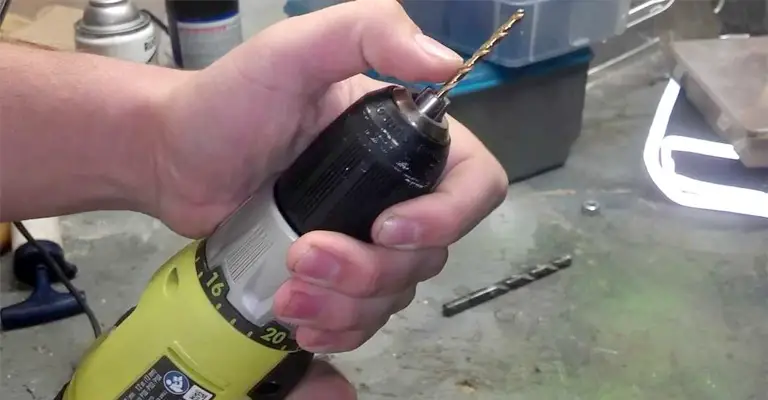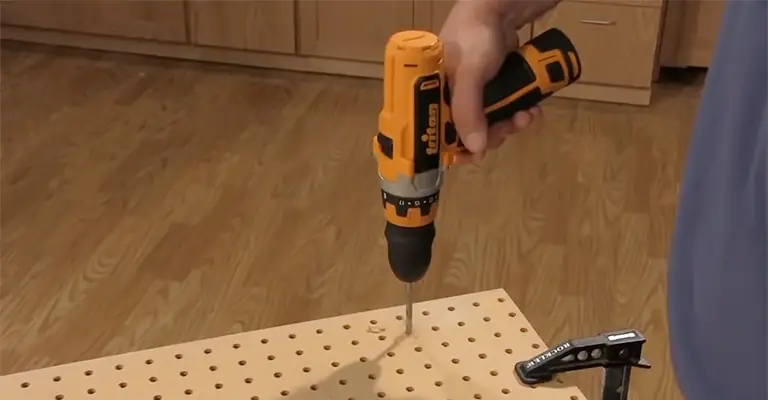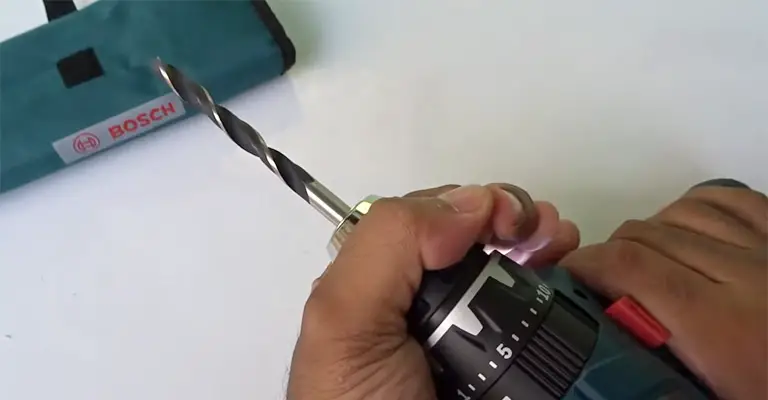Whether you’re a DIY enthusiast or a professional tradesperson, using a drill is an essential part of many projects.
However, one common challenge that can arise when working with drills is how to put a small drill bit in a drill.
While this may seem like a simple task, it can be tricky if you’re not familiar with the process. Whether you’re looking to drill precise holes or need to work with delicate materials, using a small drill bit is often necessary.
In this article, we’ll take a closer look at how to put a small drill bit in a drill, covering both traditional and alternative methods.
Whether you’re a seasoned pro or just starting out, read on to learn everything you need to know about using small drill bits in your drill.
How To Put A Small Drill Bit In A Drill?

When it comes to putting a small drill bit in a drill, there are both traditional and alternative methods that can be used to get the job done.
Traditional Method:
The traditional method involves using the chuck of the drill to hold the small drill bit in place. Here are the steps:
- Turn off the drill and unplug it from any power source.
- Loosen the chuck by rotating it counterclockwise using a chuck key or by hand.
- Remove any drill bit that may already be in the chuck.
- Hold the small drill bit by the shank (the non-cutting end) and insert it into the chuck, making sure it is straight and centered.
- Tighten the chuck by rotating it clockwise using a chuck key or by hand. Make sure the drill bit is securely in place.
- Give the drill bit a gentle tug to ensure it is tightly held in the chuck.
- Turn on the drill and test the drill bit on a scrap piece of material.
Alternative Method:

Another method that can be used to put a small drill bit in a drill involves wrapping the shank of the drill bit with aluminum tape. Here are the steps:
- Cut a small piece of high-quality aluminum tape, about 2-3 inches long.
- Hold the small drill bit by the shank and wrap the aluminum tape tightly around the shank, leaving about 1/2 inch of the bit exposed.
- Insert the taped end of the drill bit into the chuck, making sure it is straight and centered.
- Tighten the chuck by rotating it clockwise using a chuck key or by hand, making sure the drill bit is securely held in place.
- Give the drill bit a gentle tug to ensure it is tightly held in the chuck.
- Turn on the drill and test the drill bit on a scrap piece of material.
What Happens If A Drill Bit Won’t Fit In A Drill?

If a drill bit won’t fit in a drill, it can be frustrating and potentially delay your project. There are a few reasons why a drill bit may not fit in a drill:
- Wrong size: The most common reason for a drill bit not fitting in a drill is that it is the wrong size. It’s essential to ensure that the drill bit’s shank matches the chuck’s size. If the shank is too large or too small for the chuck, the bit won’t fit.
- Debris or damage: Sometimes, debris or damage to either the chuck or the drill bit can prevent the bit from fitting correctly. Inspect both the chuck and the bit for any damage or debris and clean them thoroughly before attempting to insert the bit.
- Worn chuck: Over time, the chuck may become worn, making it difficult to hold a drill bit correctly. If the chuck is worn, it may need to be replaced.
If a drill bit won’t fit in a drill, try these steps:
- Check that the bit’s shank matches the chuck’s size.
- Inspect both the chuck and the bit for any damage or debris and clean them thoroughly.
- Try a different drill bit to see if the problem persists.
- If the problem persists, consult the manufacturer’s instructions or seek professional assistance to diagnose and fix the issue.
In general, it’s essential to ensure that you’re using the right size and type of drill bit for your project and that your drill is in good working condition.
This can help prevent issues with inserting drill bits and ensure that your projects are completed efficiently and safely.
Final Words
While both traditional and alternative methods can be used to put a small drill bit in a drill, it is important to remember that the traditional method is the most common and widely accepted practice.
The alternative method may be useful in situations where a chuck key is not available or if you’re having difficulty securing the drill bit using the traditional method.
Always prioritize safety when working with drills, and consult the manufacturer’s instructions for specific guidance on how to use your particular drill model.






